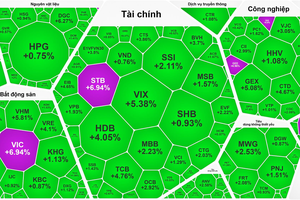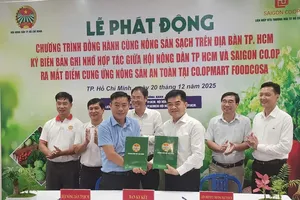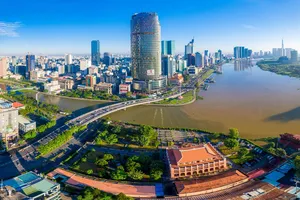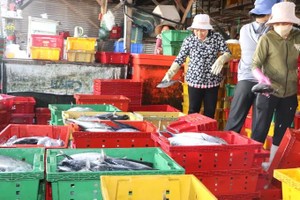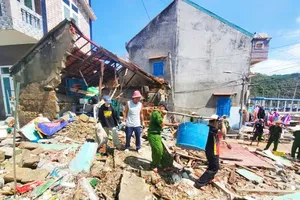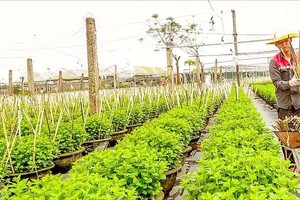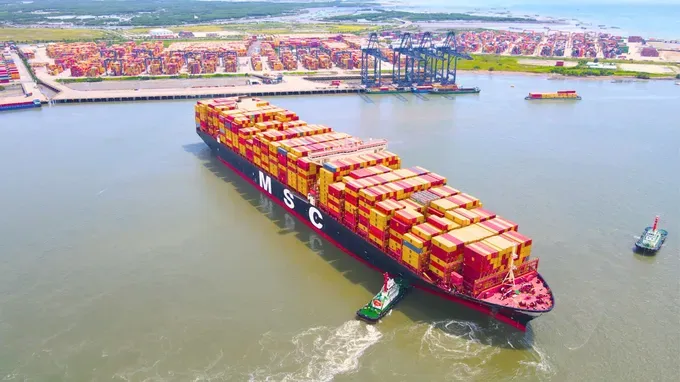
According to the plan, the seaport complex will comprise Thi Vai, Cai Mep, Long Son, and Song Dinh terminals; the Sao Mai–Ben Dinh port area; Vung Tau International Passenger Port; Con Dao Port; offshore oil terminals; as well as mooring buoys (floating terminals), transshipment zones, and areas for anchoring, waiting, and storm shelter.
By 2030, the seaport is expected to handle between 215 and 236.9 million tons of cargo, including 16.25–18.25 million TEUs (twenty-foot equivalent units) of containerized goods, excluding international transshipment containers, and accommodate 2.67–2.89 million passengers.
The seaport complex will feature 60 terminals, with 117 to 123 main wharves totaling between 28,948 and 30,823 meters in length. The land and water areas have been designated in accordance with the scale of the terminals and to meet cargo throughput requirements.
The plan envisions the continued development of new terminals to meet cargo throughput demand, with an average annual growth rate of approximately 3.5 percent to 3.8 percent by 2050. Cai Mep Ha Port is projected to expand to 17 berths, while the downstream Cai Mep Ha terminal is expected to develop 33 berths to accommodate growing cargo volumes.
Under the plan, priority investment projects include the expansion of the 'S-shaped' section of the Cai Mep–Thi Vai marine fairway, along with infrastructure supporting maritime safety, such as anchoring, waiting, and storm shelter areas, and the Vessel Traffic Service (VTS) system. Investments will also cover the construction of service berths and facilities to support specialized state management functions.
Additionally, priority will be given to developing ports in the Cai Mep Ha area, the Vung Tau International Passenger Port, and other terminals in accordance with the master plan.
Vung Tau International Passenger Port is planned as a single terminal with two berths totaling 840 meters in length, capable of handling 1.39–1.5 million passengers. The port can accommodate vessels with a capacity of up to 225,000 GT.
Under the plan, the total land requirement by 2030 is approximately 1,931.3 hectares, excluding areas for industrial parks, logistics zones, and other port-related developments. The total water area requirement is around 68,923 hectares, which includes other water zones within the management scope where maritime structures will not be built.

By 2030, the investment demand for the Ba Ria–Vung Tau seaport system is estimated at approximately VND81,841 billion (US$3.1 billion), including VND5,131 billion (US$195 million) for public maritime infrastructure and VND76,710 billion (US$2.9 billion) for port terminals (covering only commercial cargo handling terminals).
Public maritime infrastructure is planned to be developed in coordination with the scale of the terminals, with the investment schedule dependent on available resources and demand.
This includes the renovation and upgrading of marine fairways, including the Vung Tau–Thi Vai from buoy No. 0 to the Cai Mep container port area; the section from buoy No. 0 to the upstream of Cai Mep International Container Terminal (CMIT) for vessels up to 200,000 tons/18,000 TEU or larger; and the section from the upstream of CMIT to the upstream of the Tan Cang Cai Mep container terminals (TCIT and TCCT) for vessels up to 160,000 tons or larger.
Additionally, the section at the 'S-shaped' bend, from the upstream of Tan Cang Cai Mep container terminals (TCIT and TCCT) to Phuoc An Port, will be upgraded for vessels of 60,000 tons full load or larger, while the section from Phuoc An Port to Go Dau Port on the Thi Vai River will accommodate vessels of 30,000 tons full load.
In addition, studies are underway to develop the Vung Tau–Thi Vai route into a two-lane waterway capable of accommodating vessels up to 250,000 tons/24,000 TEU, in line with the development of downstream port terminals.
Investments will also focus on infrastructure to ensure maritime safety and specialized state management at port areas. In cases of mobilizing private funding, investment in marine fairways may be permitted in accordance with the planned scale of the port terminals.

